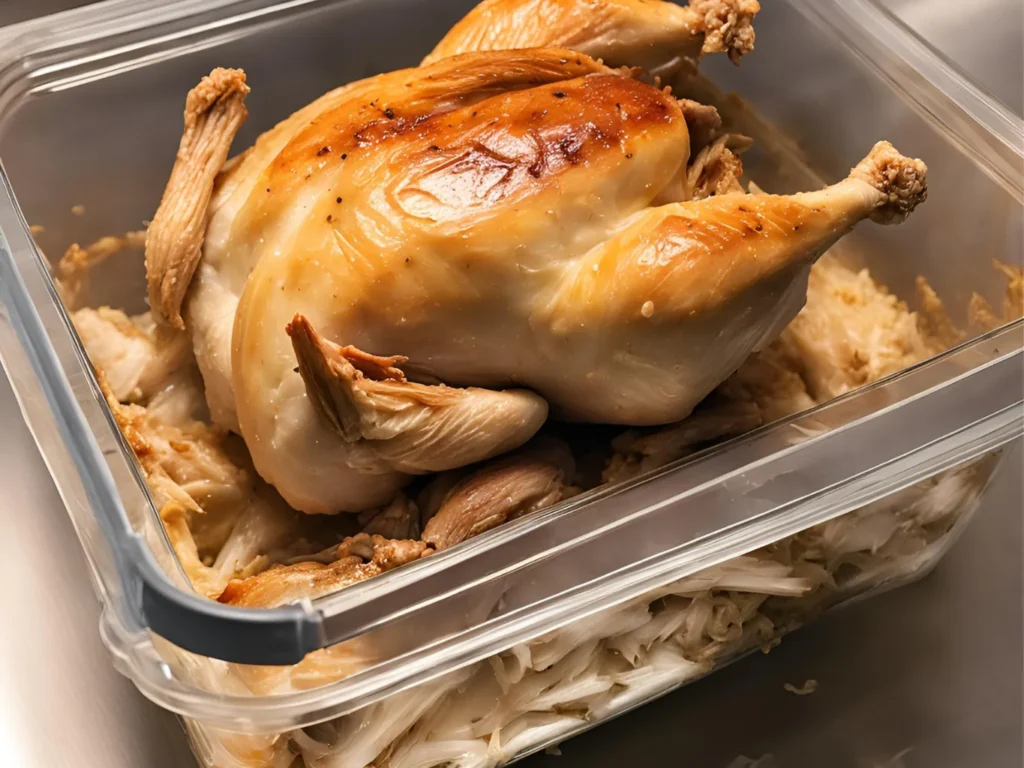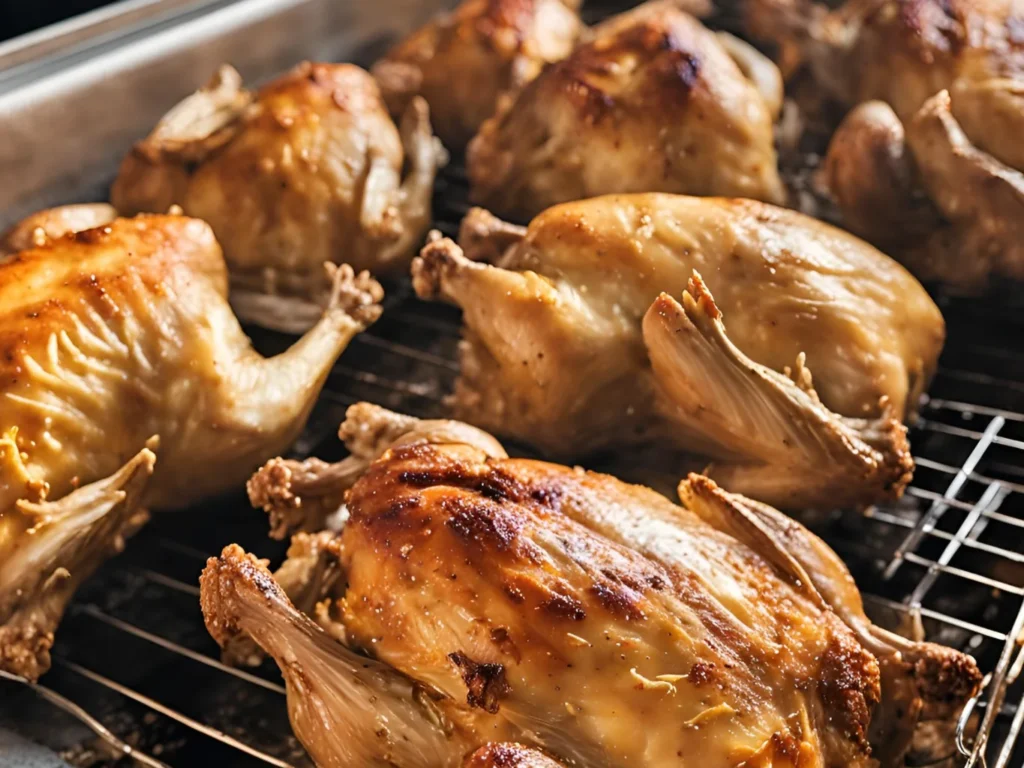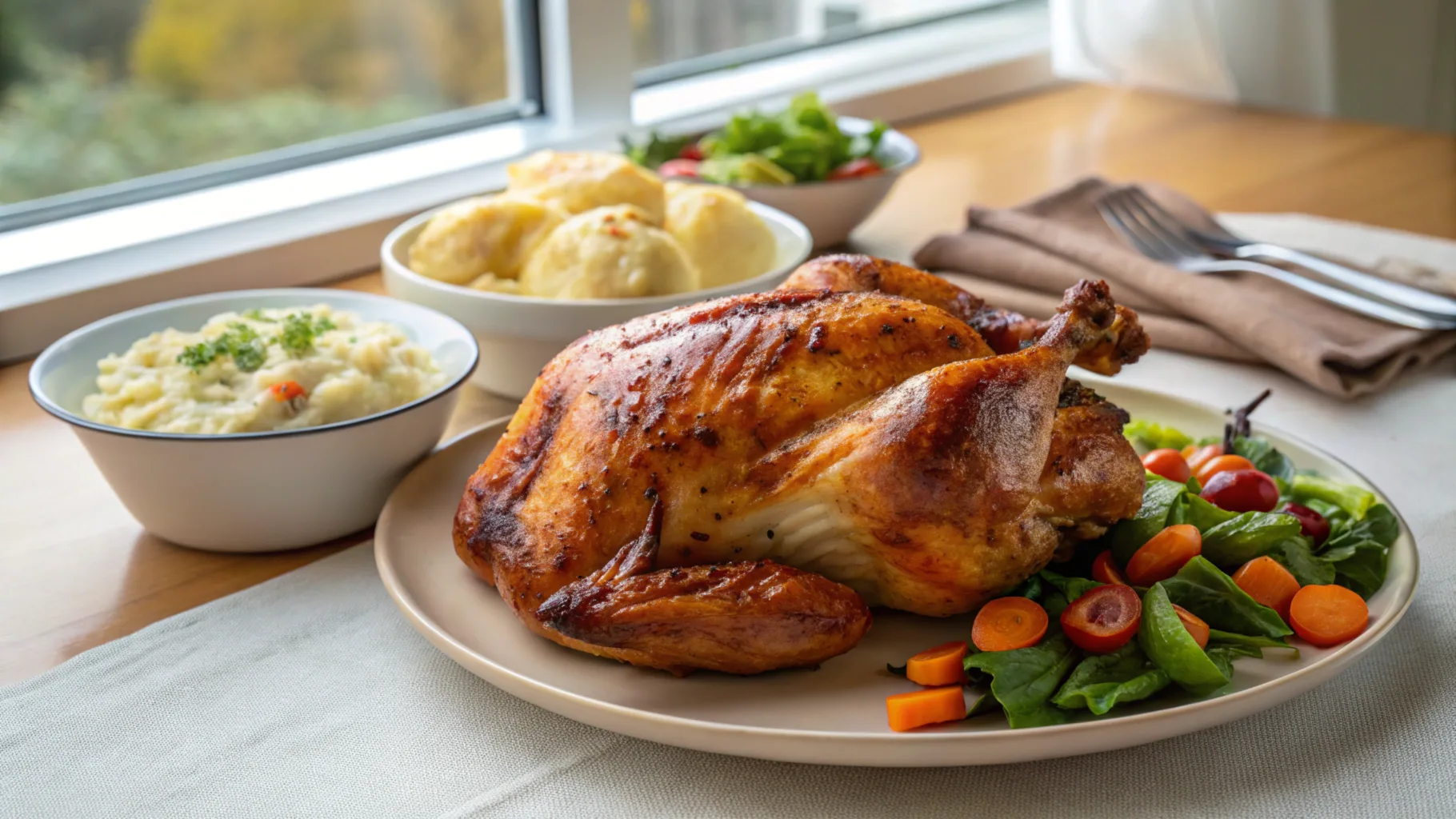Introduction
Leftover rotisserie chicken can be both a blessing and a dilemma. On one hand, it’s a convenient and delicious meal that can be easily incorporated into various recipes. On the other hand, people often find themselves unsure about how long they can safely store it. The key concern is food safety, and the main question many have is: How long is leftover rotisserie chicken good in the fridge? This article will provide clarity on this matter while giving you tips on how to store, reheat, and even freeze your chicken to enjoy it at its best.
Table of contents
Why People Love Rotisserie Chicken
Rotisserie chicken has earned a special place in many homes. It’s affordable, convenient, and incredibly versatile. Whether you’re picking one up for a quick dinner or using it as an ingredient in a larger dish, rotisserie chicken is a crowd-pleaser. It’s perfectly seasoned, tender, and juicy. Additionally, its ease of preparation and wide availability make it a popular choice for busy families and individuals alike.
The Importance of Food Safety with Leftovers
When it comes to storing leftovers, food safety is paramount. You might be tempted to keep your leftover rotisserie chicken for a few days, but it’s important to understand how long it stays safe for consumption. After all, improper handling and storage can lead to harmful bacteria growth, which could make you sick. Therefore, knowing how long is leftover rotisserie chicken good in the fridge is essential for ensuring that your meal remains safe and enjoyable.
How Long Can You Store Leftover Rotisserie Chicken in the Fridge?
Typically, leftover rotisserie chicken can be stored in the fridge for about 3 to 4 days. However, there are several factors that may influence this time frame. For example, how well the chicken was stored initially and how consistently the fridge temperature is maintained can impact its shelf life. In general, you should consume leftovers within a few days to avoid any risk of foodborne illness.
- 3 to 4 days is the recommended storage time.
- Ensure the chicken is refrigerated promptly within 2 hours of cooking.
Recommended Storage Time for Leftover Rotisserie Chicken
To maximize the quality and safety of your leftover rotisserie chicken, it’s important to follow the recommended storage guidelines. While the chicken may still be safe to eat for up to 4 days, it’s best to use it as soon as possible. You may even want to consider freezing any extra portions if you’re unsure you’ll eat them in time.
- Store within 3 to 4 days of cooking for optimal freshness.
- Label your leftovers with the date to track their age.
What Happens If You Keep Rotisserie Chicken Too Long?
If leftover rotisserie chicken is kept too long, it may begin to show signs of spoilage. Bacteria like Salmonella and Campylobacter can develop, leading to food poisoning. Additionally, the chicken’s taste, texture, and overall quality will deteriorate. It may become dry, tough, and unappetizing. Therefore, it’s crucial to follow proper storage techniques and stay within the recommended time frame.
- Bacteria growth can occur after a few days.
- The chicken’s texture and flavor will change as it ages.
Signs Your Leftover Rotisserie Chicken Has Gone Bad
It’s essential to recognize when your leftover rotisserie chicken is no longer safe to eat. Here are a few signs that indicate it has gone bad:
- Unpleasant smell: If the chicken smells sour or off, it’s time to toss it.
- Slimy texture: A sticky or slimy coating is a clear sign of spoilage.
- Color change: If the chicken’s flesh becomes discolored or gray, discard it.
- Visible mold: If you spot any mold, throw the chicken out immediately.
How to Store Leftover Rotisserie Chicken for Maximum Freshness
Proper storage techniques are key to maintaining the freshness of your leftover rotisserie chicken. If done correctly, you can preserve its taste and texture for a few days. Below are a few simple steps:
- Cool the chicken before refrigerating. Don’t let it sit out for more than 2 hours.
- Use airtight containers or plastic wrap to keep the chicken sealed and prevent exposure to air.
- Refrigerate promptly to minimize the growth of bacteria.

Proper Storage Techniques for Leftover Rotisserie Chicken
There are a few key techniques that will ensure your leftover rotisserie chicken stays as fresh as possible for the maximum amount of time.
- Separate the meat from the bones as soon as possible. This helps prevent the chicken from absorbing excess moisture and ensures it lasts longer.
- Store in an airtight container: This will keep your chicken from drying out and protect it from contamination.
- Cool quickly: Avoid leaving the chicken at room temperature for too long. The quicker it cools, the better.
The Role of Airtight Containers and Plastic Wrap
Airtight containers and plastic wrap play an essential role in storing leftover rotisserie chicken. These items help to lock in moisture and reduce the risk of contamination from other foods in your fridge. When properly sealed, they also protect the chicken from absorbing any odors from other items.
- Airtight containers keep moisture in, keeping the chicken moist and fresh.
- Plastic wrap is a flexible, effective option if you don’t have a container.
Refrigeration Temperature and Its Impact on Chicken Longevity
The temperature of your refrigerator significantly affects the longevity of leftover rotisserie chicken. Ideally, your fridge should be set to 40°F (4°C) or below. This temperature slows down bacteria growth, ensuring your chicken stays fresh longer. A temperature above this can cause the chicken to spoil more quickly.
- Store at 40°F (4°C) or lower for optimal storage conditions.
- Check the refrigerator temperature regularly with a thermometer.
Can You Freeze Leftover Rotisserie Chicken?
Yes, you can freeze leftover rotisserie chicken to extend its shelf life. Freezing helps preserve the chicken for months, making it a convenient option for later meals. However, it’s important to follow proper freezing methods to avoid compromising the chicken’s quality.
- Freezing extends the shelf life for up to 4 months.
- Make sure to store the chicken in an airtight container or freezer-safe bag.
Freezing Leftover Rotisserie Chicken: Tips and Best Practices
Freezing leftover rotisserie chicken is a great way to preserve it for future use. To do so properly, follow these tips:
- Cool the chicken before freezing to avoid raising the temperature of the freezer.
- Shred or portion the chicken: If you want to use it for various dishes, it’s helpful to shred or divide the chicken into meal-sized portions.
- Use freezer bags or containers: Ensure that all air is removed to prevent freezer burn.
How Freezing Affects the Taste and Texture of Chicken
While freezing helps preserve the chicken, it can affect the taste and texture. Freezing causes water molecules in the chicken to form ice crystals, which can lead to a slightly altered texture. The chicken may become a little drier after reheating, but it’s still safe to eat and can be used in recipes like soups, salads, and casseroles.
- Freezing can change the texture of the chicken, making it a bit drier.
- The flavor remains mostly unchanged, making it still usable for most dishes.
How to Reheat Leftover Rotisserie Chicken Safely
Reheating leftover rotisserie chicken requires caution to ensure that it’s safe to eat and retains its flavor. The key is to reheat it to the proper temperature—165°F (74°C)—to kill any bacteria that might have grown during storage.
- Use a food thermometer to check the internal temperature.
- Reheat only once to avoid compromising quality and safety.

Safe Reheating Methods: Oven vs. Microwave
There are several methods for reheating leftover rotisserie chicken, and each has its pros and cons:
- Oven: Reheating in the oven helps retain moisture and texture. Preheat to 350°F (175°C) and heat for 15-20 minutes.
- Microwave: The microwave is faster, but it can cause the chicken to dry out. Cover it with a damp paper towel to help retain moisture.
How to Reheat Without Drying Out the Chicken
To prevent leftover rotisserie chicken from drying out when reheating, you can:
- Add a bit of water or broth when reheating in the microwave.
- Cover the chicken with foil or a lid to retain moisture in the oven.
- Check periodically to ensure the chicken doesn’t overcook.
For more recipes:
- Gordon Ramsay Like His Burgers Cooked: How Does Gordon Ramsay Like His Burgers Cooked?
- the Secret to Crème Brûlée : What is the Secret to Crème Brûlée? Unveiling the Classic Dessert’s Perfection
FAQs
Can I Eat Rotisserie Chicken After 5 Days?
Although you might still find rotisserie chicken fine to eat after 5 days, experts generally recommend consuming it within 3 to 4 days for the best taste and food safety. After 5 days, bacteria such as Salmonella or Campylobacter begin to grow, even if you store the chicken properly in the fridge.
To ensure safety and enjoy your leftover rotisserie chicken at its best, it’s always a good idea to follow the 3 to 4-day rule and avoid waiting too long before eating.
How Long Will a Costco Rotisserie Chicken Last in the Refrigerator?
A Costco rotisserie chicken, just like any other rotisserie chicken, can stay in the refrigerator for about 3 to 4 days. This timeframe ensures that the chicken stays fresh and safe to eat. However, the exact duration may vary depending on how the chicken was handled after purchasing it.
Can You Eat Cooked Chicken After 7 Days?
While it may seem tempting to eat cooked chicken after 7 days, it’s generally not advisable to do so. Even when stored in the fridge, cooked chicken should be consumed within 3 to 4 days to minimize the risk of foodborne illness. After 7 days, bacteria can grow to unsafe levels, and the chicken may no longer be safe to eat.
How Do I Know if Rotisserie Chicken Has Gone Bad?
It’s important to be able to identify when rotisserie chicken has gone bad, as consuming spoiled chicken can lead to food poisoning. Below are the most common signs that indicate rotisserie chicken has spoiled:
Smell: Fresh chicken has a mild, savory smell. If it has developed a sour or rancid odor, it’s no longer safe to eat.
Texture: The chicken should be firm, moist, and tender. If it feels slimy or sticky to the touch, discard it immediately.
Color: Fresh rotisserie chicken typically has a golden-brown color, with white meat and darker skin. If the chicken has turned gray or greenish, it has spoiled.
Visible Mold: Mold growth on chicken is a clear sign that it’s time to throw it away.
Additionally, if the chicken was stored improperly or left out at room temperature for more than 2 hours, the risk of spoilage increases significantly. Always inspect the chicken carefully before consuming it.
Can I Freeze Rotisserie Chicken After 4 Days?
Yes, you can freeze rotisserie chicken after 4 days, although its texture and flavor may not be as good as it would have been if frozen earlier. Freezing leftover rotisserie chicken at this point will help preserve it for a longer period—up to 4 months—but keep in mind that the chicken may lose moisture and become drier when reheated.
Conclusion
Leftover rotisserie chicken is a convenient and tasty meal option, but to enjoy it safely, it’s essential to follow proper storage and reheating guidelines. By knowing how long is leftover rotisserie chicken good in the fridge, using the correct storage methods, and reheating it safely, you can continue to enjoy your chicken without worrying about food safety issues. With these tips in mind, you can make the most of your rotisserie chicken while keeping your meals both delicious and safe.






